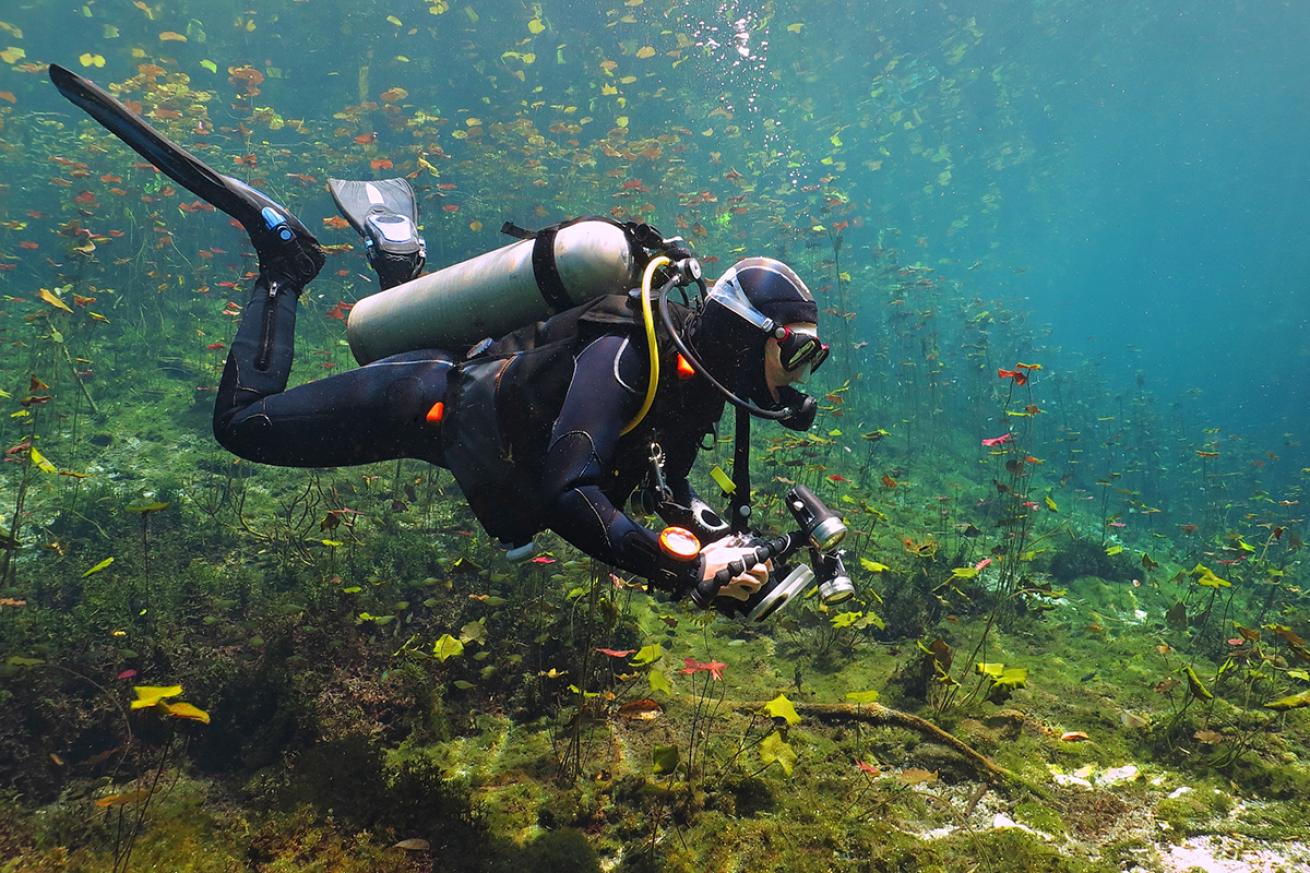Forget Deep Dives. I Love Shallow Water Diving — And You Will Too.

Shutterstock.com/Lue-sea.czShallow waters sparkle with life and light, both prime for excellent scuba experiences.
Sixty feet below the surface in the cold, grey-blue waters of California, I shivered. I knew my dive was coming to an end, but with 1000 psi left in my tank, I just wasn’t ready to leave. I started to kick towards shore as the seafloor rose below me. Shallower and shallower, my bubbles travelled just a few feet before breaking the surface. Sunlight streamed in through the kelp canopy, illuminating a glorious cathedral of amber shoots. Vibrant reds, yellows and greens that were previously absorbed by the depths popped out at me as undulating macroalgae kept rhythm in the gentle surge.
An otter, whacking a giant clam shell against a rock, paused mid-strike to stare at me before returning to his mission. Typically shy creatures, this otter seemed completely at ease so close to the surface. Fish I had never seen before flitted through blades of swaying seagrass. The rippled surface of the water reflected off my mask and became a glittering blanket, encompassing the entire ecosystem in a colorful bubble. By the time my head emerged from the water, I knew I had found something special.
Many divers chase the thrill of exploring deeper depths. I used to as well, but the best kept secrets exist in the shallows. Here, colors dance in the sunlight, animals carry out unique behavioral displays, and a tank seems to last for an eternity.
Traveling to far-off dive destinations right now may not be safe or possible, but we can get an entirely new experience at local sites by exploring their most under appreciated spots. I spent the pandemic getting reacquainted with my local sites at shallower depths and the benefits have blown me away.
Photographer’s paradise
Divers rely on artificial light to bring out the colors of the reef that disappear at depth, but in the shallows natural light is abundant. Because colors disappear the deeper you go, staying close to the surface means that all of the colors of the reef show up in full force.
“A brilliantly red fish will pop with color near the surface. Encounter that same fish at 40 or 50 feet, and it becomes a dull yellowish green in all but the clearest of water,” says professional photographer Justin Hofman, who rarely does deep dives. “We generally have to add light to the scene to create contrast or bring out color, but if we stay shallow or have very clear water, then the sunlight is all we need. The number of really incredible wildlife encounters I’ve had in shallow waters far outweigh anything that I’ve seen down deep. This is where primary production is at its peak, oxygenation is highest, and critters abound”.
Many animal encounters can only be enjoyed shallow
Some animals prefer to spend time in shallow water. Others only come to the surface seasonally to feed and mate before disappearing into the depths. Because the shallows get so much light, photosynthesizing plankton proliferate, bringing many photo-worthy species up to the surface to feed. Massive schools of mobula rays and marlin feeding frenzies are found in less than 30 feet seawater, says Jay Clue, who runs citizen science expeditions through Dive Ninja Expeditions in Cabo, Mexico. The abundance of the shallows there attracts diving birds, marine mammals, gelatinous drifters and schools of sardines.
Juvenile fish seek refuge in the shallows
Shallow reefs, mangroves and seagrass beds all function as important nurseries, where juvenile fish are protected from larger predators. “Seagrasses live exclusively in shallow water because they need a lot of light. Some animals, like the mangrove jellyfish, are really only found in seagrass beds,” says Liz Allen, an expert in regulations protecting seagrass. “Various fish species only live within these underwater grasslands when they are young before moving to nearby coral reefs or to the greater ocean as adults.”
These vital habitats support life that the entire ocean ecosystem depends on. With a keen eye, divers can find animals and life stages that they would never encounter any deeper.
Seemingly endless bottom time
While your tank may only last 30 minutes on an 80-foot dive, the same tank may last well over an hour in the shallows. “You’ve got all the time in the world,” says Clue, who shares my love of diving shallow. And because you are under less pressure, your nitrogen load will be lower too, which translates to shorter surface intervals and decreased risk of nitrogen-related injuries.
Give it a try
The magic of shallow water was unknown to me for many years when striving to reach greater depths was a constant goal. That focus feels silly now that I know how much good stuff is happening right at the intersection of land and sea! A visit to the shallows can turn any well-known dive site into a brand new experience. So next time you’re planning a dive, spend a little bit of extra time where you would normally do your safety stop. I promise you won’t be disappointed.










